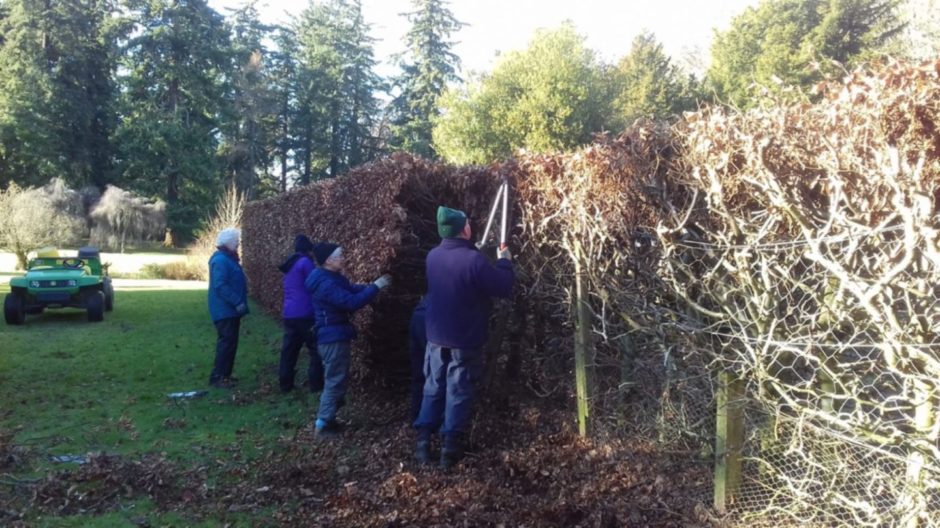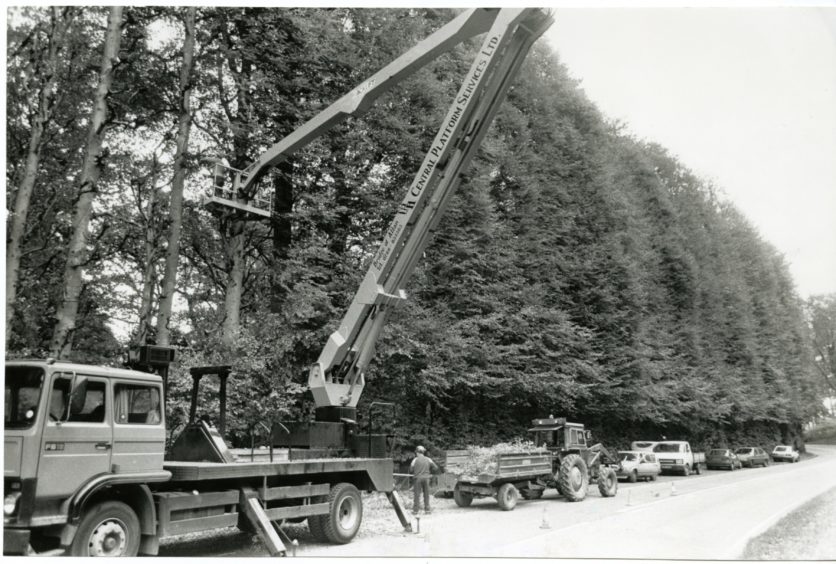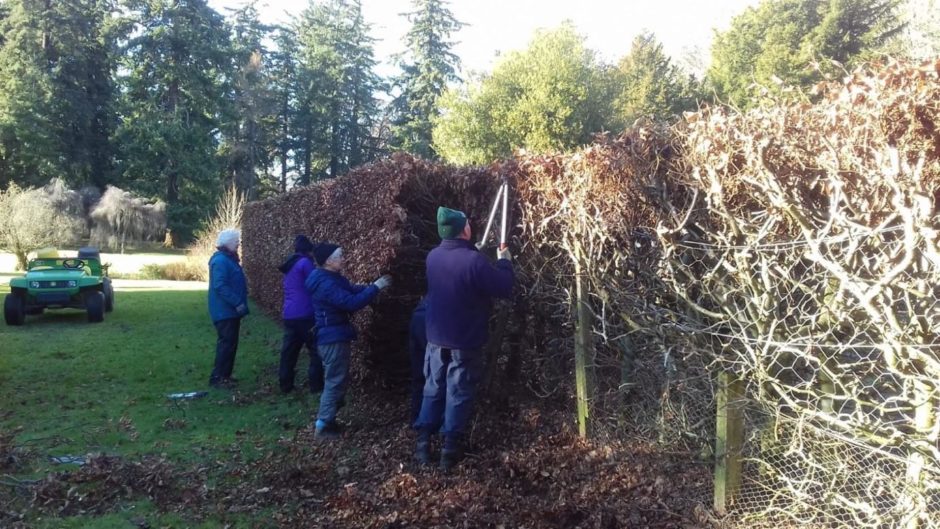Brian Cunningham is getting creative when it comes to dealing with boundaries in the garden.
Whenever I can I always like to use plants as solutions to gardening problems especially when needing to create division and define boundaries.
Don’t get me wrong you can get some beautifully constructed walls perfect for tucking plants in such as you would find in an alpine garden, or up and on that of a walled garden where warmer micro climates are created allowing us to grow crops more successfully. For me, I just love a good hedge.
They have so many uses in the garden, they help to separate our own garden with the neighbours and provide screening to give us a little privacy.
In design they can be used to divide our garden into little rooms helping to create the impression our outdoor space is larger than what it actually is.
If you wish to attract birds then in my eyes there can’t be anything better than a hedge having seen the results myself after adding a beech hedge to mark the boundary of my own garden.
We now watch robins, great and blue tits and others using this for cover before making their way to the feeders outside our sitting room window.
I suspect the option of choosing the construction of a wall or a fence over a living hedge is to avoid the regular maintenance that comes with them.
The initial cost may be high and if they don’t collapse or fall down then they certainly do provide a low maintenance simple solution.
I know I’m biased but a once a year trim isn’t the end of the world, if it helps nature and keeps me fit and active in the process then happy days.
To ensure hedges don’t become a burden then I would say it’s important to have the correct plant choice- a statement that in fact applies to everywhere in the garden.
Today there’s a good variety of different plant choices available that can be used for hedging over and above the often seen but ever reliable Yew, Beech and Privet.
For years I always thought Privet, or it’s Latin name Ligustrum ovalifolium, was the only type of hedge you could get being all that there was in the post war housing where I first grew up.
Being tolerant to most types of soils and it’s ability to make a solid mass quickly made it a popular choice though nowadays not ideal for the time-starved gardeners due to it requiring trimmed at least twice during the growing season to keep it in check.
Sadly I can’t see myself ever choosing this shrub today as a hedging choice but I’ll always think of it fondly as part of my childhood though probably not for the right reasons.
When I was younger and feeling brave I would join my mates in a game of ‘hedgy’ where we would use the tough privet hedges in the back gardens of Chamberlain Street as our version of the Grand National, starting at one end running through the gardens jumping over the hedges.
This is certainly not something I would condone my own children doing today and I would like to take this opportunity to apologise profusely to those garden owners, but it was great fun!
Today I’m a poacher turned gamekeeper knowing exactly what tricks I need to look out for, keeping my own hedge 6ft tall to deter any similar high jinks from the youth of today.
I also know I wouldn’t even had dreamt of attempting such a thing if those hedges had instead been either of Holly, Hawthorn or Berberis which have foliage and branches of spines and thorns.
These are ideal for security and you may also see them strategically placed by frustrated head gardeners in parks and gardens using as a deterrent to visitors from taking shortcuts!
There is a hedging plant for every situation- Fuchsia and two plants from New Zealand Brachyglottis and Griselinia are great for gardens in coastal situations being able to tolerate salty winds from the sea. Ribes sanguineum and cultivars of Potentilla fruticosa can make attractive and unusual flowering hedges as can the rose R. canina which combined with hazel, Rowan and blackthorn are also ideal for encouraging wildlife.
Despite our best efforts to keep them tidily trimmed and within their allotted space it’s fairly inevitable they will eventually grow slightly wider than we wish, encroaching borders and paths thus making tricky to pass.
When this is the case a touch of hard pruning is required, now being the best time to take some action to renovate deciduous hedges waiting until mid-spring before tackling evergreens.
As always please make sure you do some research on what kind of hedge you have as the practise I am about to describe does not suit all particularly the fast growing Leylandii conifer.
Needing to be done in stages which gives the plant a complete growing season for recovery, in the first year one side of the hedge can be cut hard almost right back to the main stem if necessary.
The hedge will then benefit from a bonemeal feed and mulch around the base of the plant to encourage the plant into regrowth.
If needing, the other side and top could be covered in the following two years.















